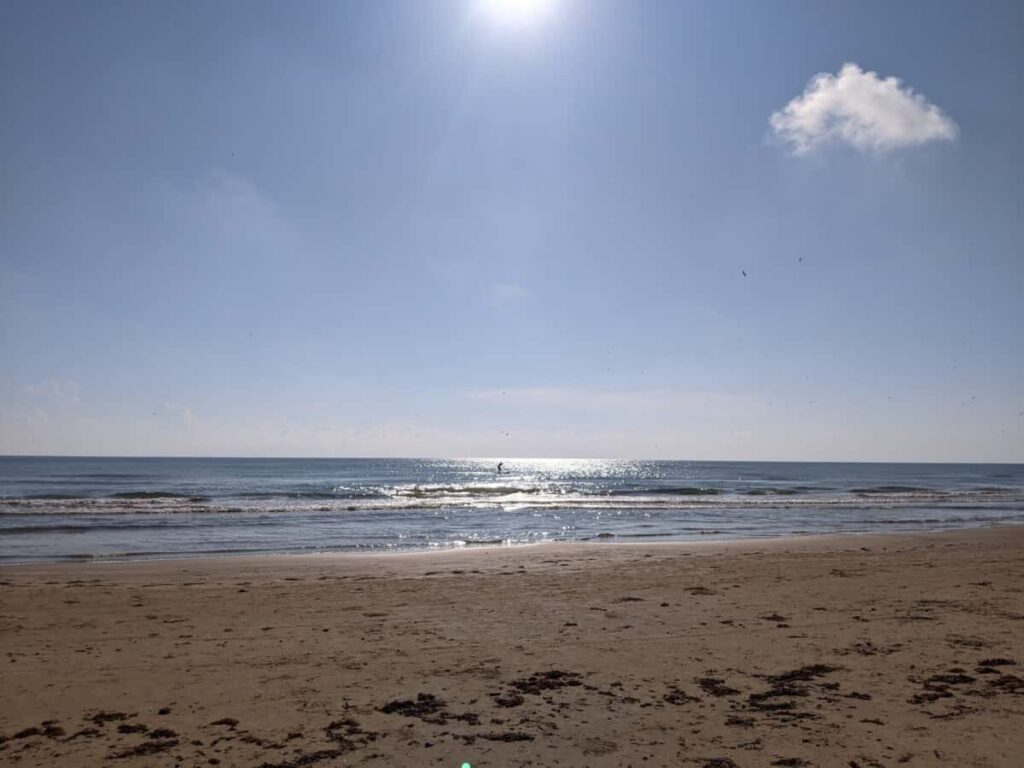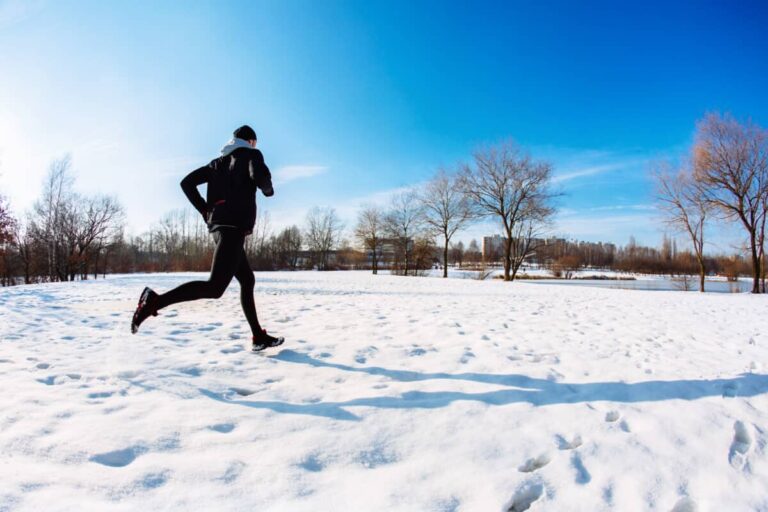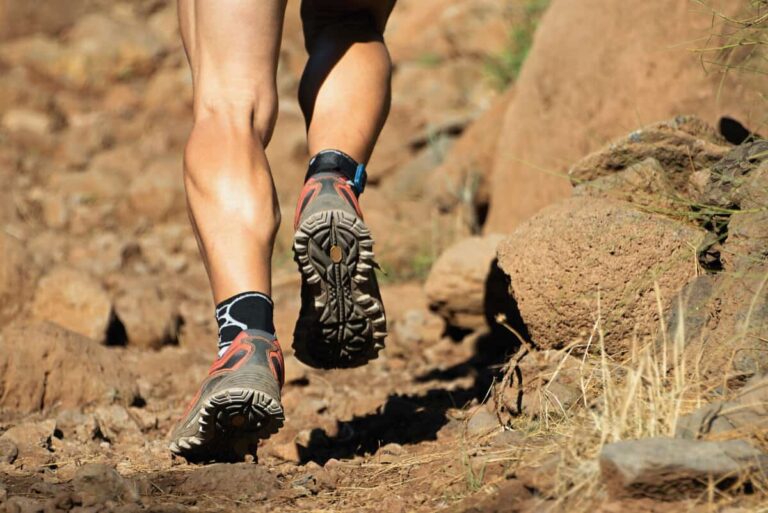Is It Harder To Run On Sand? 6 Tips And Tricks
Running on the beach or even sandy trails can seem intimidating at first. When you run on the road, you know what you are in for, and many of us are used to it, but running on sand is new to many people. So, is it harder to run on the sand, and what can you do to make it less intimidating?
Running on sand is much more difficult because sand sinks while you propel yourself forward meaning you have to exert much more energy pushing off to maintain the same speed as another surface. Additionally, depending on the sand, the ground can be uneven forcing you to slow down.
In the rest of this article, I want to give you a few tips and tricks for running on this sand. A lot of these will be aimed at running on the beach, but I will include running on the trail as well. To start, I want to give you a few reasons why it is harder to run on sand than on cement or tar. Let’s jump into it.

Why Is It Harder To Run On Sand?
Running on the sand seems simple when watching a TV show like Baywatch because actors make it seem so. Running on the sand can be a lot more challenging than what you’d imagine. It seems like it would be a lot more comfortable because the sand is so much softer than the road. However, here are a few reasons why it is so much harder:
- When your feet sink into the sand, it takes more energy to propel yourself forward.
- The beach is uneven.
- Trails have lots of obstacles on them.
- Running on sand is more taxing on your knees and ankles.
- On trails, loose sand can cause instability with each step.
You would assume that running on the road is harder on your ankles and knees because surely a hard surface is more taxing than a soft one, right? This is true, a hard surface like asphalt puts a shock on your entire body when you land on your foot.
However, loose sand is uneven, and can actually require force on your joints in all directions while you push off from your feet which can lead to injury, especially on the sand at the beach. Because your knees and ankles are constantly adapting to the surface, this puts strain on your joints.
6 Essential Tips And Tricks For Running On Sand
Most of this section will be aimed at running on beach sand. We will be discussing trails a little bit because some trails can be pretty sandy. However, if you are a trail runner, I highly recommend taking a look at our trail running section on this website.
With that said, here are my six essential tips and tricks for running on the sand.
Run On Hard Sand
Running on the soft sand would increase your heart rate and temperature. This means that your overall workout will be much more intense, but it doesn’t mean that it is better for you. Instead, you want to run on the hard sand, and here’s why.
The soft sand is typically uneven, which can become extremely taxing on your ankles. So, potential injuries aside, your form will start to dip as you keep running. As we all know, form can be a lot more important than your run time or distance.
Speaking of distance, you won’t be able to go as far on soft sand as you would on hard sand.
In short, if you want distance and a more consistent running experience, go to the wet sand (the hard sand).

Use Running Shoes or Trail Shoes
So, it is possible to run barefoot on the beach because even the hard sand is relatively soft. However, as picturesque as that may be, I don’t recommend it. Quick story time:
I was camping on the beach with my friends and I decided to wake up early and go for a run and watch the sunrise. It was amazing! But I didn’t bring any footwear and just ran on the beach barefoot for a few miles.
People take exfoliating baths with salt scrubs–imagine that the sand is one big exfoliator, and you’re running on it putting all your body weight and then some with every step. Your feet are going to be raw. Mine were.
Although it was a lot of fun, my feet were raw from the sand, and my feet weren’t conditioned for barefoot running so I could feel pain in my feet and ankles.
At the very least, you should wear running shoes if you run with running shoes, normally.
The best shoes to wear for running on the beach are trail shoes; here’s why:
- Trail shoes are built to support your feet on sand, soft or hard.
- You want shoes that are durable against sand, mud, and rain.
If you or looking for a new pair of trail shoes specifically for the beach, I recommend getting a pair that has as little stitching as possible: Let me give you a few recommendations from Amazon:
Do Adequate Stretches
A recurring theme in this article is that running on sand is a lot more taxing on your body, specifically your joints such as your knees and ankles. So, when you are stretching, you don’t only want to do the usual stretches like your thighs, hamstrings, and calves.
Instead, you want to stretch your ankles as much as you can while also focusing on those other muscles.
There isn’t a lot of proof (source) that stretching prevents injuries but stretching and warming up does improve blood flow and flexibility which might help you. It’s really up to your own body and experience.
Watch Where You Are Going
This tip applies to both trail running and beach running. You want to constantly watch where you are going. You might encounter obstacles such as rocks, logs, and big holes in the ground on a trail.
The same can be said for beach running, except if you are running on uneven sand, seeing where you are going can help you with your foot placement. If you have good foot placement with every stride, you can reduce the toll that running puts on your ankles.
Where High Socks (Trail Running)
On the beach, you aren’t going to encounter many bushes and shrubs. However, you will encounter these while on a trail.
Wearing high socks can help prevent getting scratches from bushes and shrubs, as well as keep you safe from insects like ticks that you might pick up out in the scrub. Check out our article about getting prepped for a trail run to see other tips on how to make trail running successful
Cover Your Eyes (If It Is Windy)
Eye safety gets overlooked way too much, and its importance cannot be overstated. If you are running on the beach, whether it is a sloping beach or flat, or if you are running on hard or soft sand, you need to protect your eyes.
If you are running and the wind starts to pick up, getting sandblasted is never fun, especially if you aren’t wearing some form of sunglasses. And no, it doesn’t have to be sunny for this to happen. All you need is a little bit of wind, and the soft sand can hurt, especially if you are running against the wind.
Final Thoughts
I would never discourage somebody from running on the beach. There are certainly a lot of benefits to doing so. However, it would be best to take certain safety precautions because you don’t want to injure yourself. An injury can hamper your overall progress when it comes to fitness.





